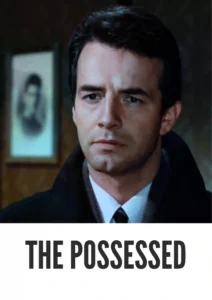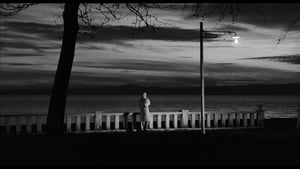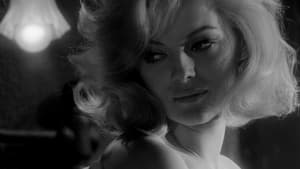Video Sources 0 Views

Synopsis

Get ready for a chilling exploration of obsession and mystery with The Possessed, a 1965 Italian film now beautifully colorized to enhance its haunting atmosphere. Directed by Luigi Bazzoni and Franco Rossellini, and featuring a talented cast including Peter Baldwin and Virna Lisi, this film blends elements of noir and arthouse cinema to create a unique pre-giallo experience. Perfect for fans of classic mysteries and those seeking a suspenseful cinematic journey, this HD download brings a forgotten gem of Italian cinema to vivid life. Also known as La donna del lago (The Lady of the Lake) and Love, Hate and Dishonor, this is a must-see!
The Possessed follows Bernard (Peter Baldwin), a novelist who returns to a small, secluded town near a lake, hoping to reconnect with Tilde (Virna Lisi), a maid he had become infatuated with during a previous visit. Upon his arrival, he is shocked to learn that Tilde has died, supposedly by suicide.
Determined to uncover the truth, Bernard begins his own investigation, quickly realizing that the circumstances surrounding Tilde’s death are far from clear. He encounters a web of intrigue involving the hotel owner Enrico, his daughter Irma, and Enrico’s son Mario, along with Mario’s new wife Adriana. Each encounter deepens the mystery as Bernard experiences unsettling daydreams, flashbacks, and hallucinations.
As Bernard delves deeper, he uncovers hidden secrets and conflicting accounts, leading him to question everything he thought he knew about Tilde and the town’s inhabitants. The film masterfully blends psychological suspense with elements of classic mystery, keeping viewers guessing until the final reveal.
The film features a talented cast who bring the complex characters to life:
-
Peter Baldwin as Bernard
-
Virna Lisi as Tilde
-
Salvo Randone as Mr. Enrico
-
Valentina Cortese as Irma
-
Philippe Leroy as Mario
-
Pia Lindström as Adriana
The Possessed is best described as a mystery thriller with strong elements of psychological drama and noir. It is often considered a precursor to the giallo genre, known for its stylish visuals and suspenseful plots.
Released in 1965, The Possessed is a prime example of the Italian mystery films that gained popularity during the 1960s. These films often explored themes of psychological torment, hidden secrets, and unreliable narrators, reflecting the anxieties and uncertainties of the time. The Possessed stands out for its atmospheric visuals, complex characters, and its exploration of the dark side of human nature.
This colorized version of The Possessed has been painstakingly restored using state-of-the-art digital techniques, enhancing the visual experience while maintaining the film’s original mood and atmosphere. The colorization process involved a careful analysis of the grayscale tones in the original black and white footage, with meticulous attention to detail in assigning appropriate colors to each scene. Advanced algorithms for color palette selection, motion estimation, and image enhancement were employed to breathe new life into the characters and settings, making the story even more captivating for modern audiences. While the artistic merit of colorizing classic films is a frequent debate, it allows these films to connect with a broader audience, ensuring their continued appreciation for generations to come.
-
: Luigi Bazzoni, Franco Rossellini
-
: Luigi Bazzoni, Giulio Questi, Franco Rossellini, Ernesto Gastaldi
-
: La donna del lago by Giovanni Comisso
-
: Leonida Barboni
-
: Nino Baragli
-
: Manolo Bolognini
-
: Telexport
-
: 90 minutes
-
: MP4
-
: HD (1080p)
-
: Compatible with most devices, including smartphones, tablets, computers, and smart TVs.
The Possessed (1965) has been praised for its atmospheric direction, its complex and intriguing plot, and its strong performances from the cast. It remains a hidden gem of Italian cinema, celebrated for its unique blend of mystery, suspense, and psychological drama. As a relatively obscure but highly rewarding film, The Possessed offers a fascinating glimpse into the world of Italian mystery films of the 1960s.
-
: What is The Possessed about?
-
A: The Possessed is a mystery film about a writer who investigates the apparent suicide of a woman he was infatuated with.
-
-
: Is The Possessed (1965) a well-known film?
-
A: While not as widely known as some other classics, The Possessed has gained a cult following among fans of Italian cinema.
-
-
: Is this version of The Possessed colorized?
-
A: Yes, this version has been professionally colorized to enhance the viewing experience.
-
-
: What makes The Possessed interesting for classic film fans?
-
A: The Possessed offers a unique blend of mystery, suspense, and psychological drama, with strong performances and atmospheric direction.
-
-
: What is the download format?
-
A: The download format is MP4, which is compatible with most devices.
-
-
: What resolution is the download?
-
A: The resolution is HD (1080p), providing a high-quality viewing experience.
-
Watch The Possessed Today!













